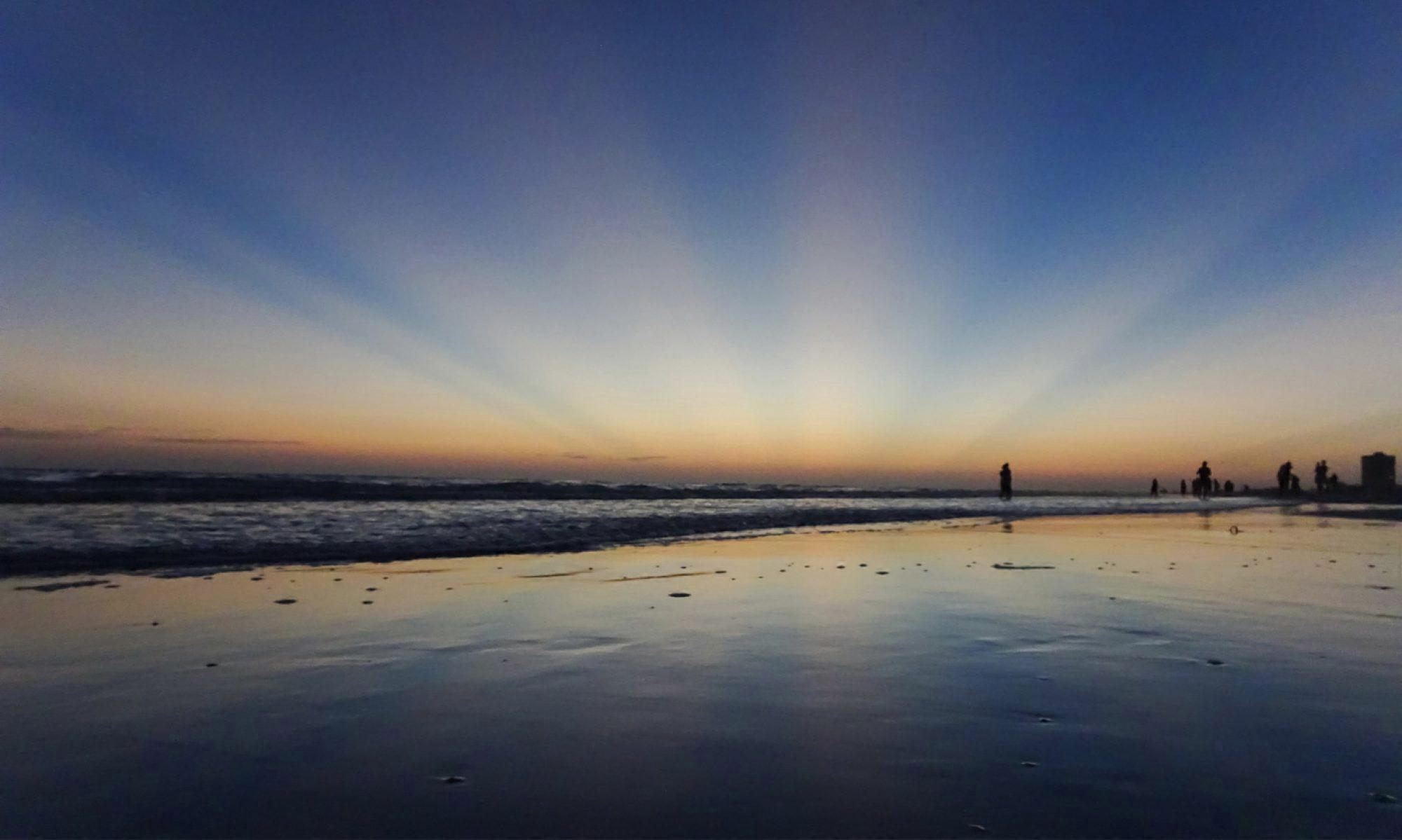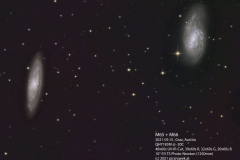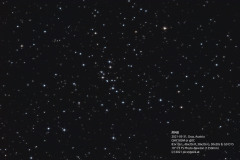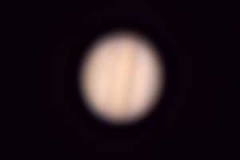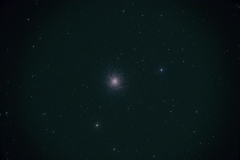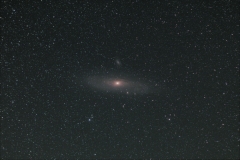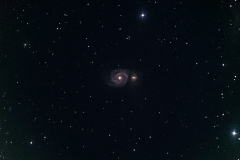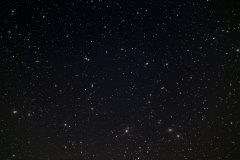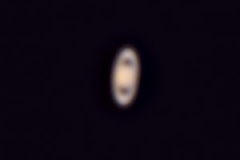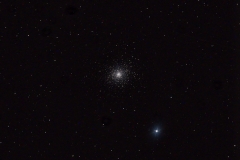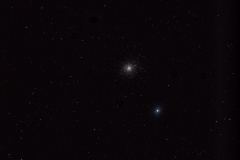The past months I had trouble with my 10 inch scope. I was not able to image with nice round stars. So i kept imaging with my smaller refractor, as stars were rendered round. After some investigation and chat with fellow astronomy club members, I could nail down the cause of the elongated and triangular stars: the auto-guider as well as a too short settle time after dithering were messing up. So, to achieve the round stars everyone is after, I had to increase the settle time after dithering (otherwise, I got double-images due to the offset) as well as the guiding parameters in MGEN. My settings for off-axis guiding on 1250mm focal length are: Threshold: 0.1, Aggressivness: 100% in RA and 80% in DEC and 2×2 binning.
The first test target was M48 with 50% aggressiveness. Stars were not yet fine. The second target was M65 together with M66. Stars are fine!
Image data:
Date: 2021-03-31
Location: Graz, Austria
Telescope: 10″ f/5 Newtonian with GPU corrector (1250mm focal length)
Camera: QHY183M @ -20C
Filters: Optolong RGB
Guiding: MGEN-II with off-axis guider
Exposures:
M48: 83x10s L, 46x20s R, 30x20s G, 30x20s B
M65+M66: 48x60s L, 39x60s R, 32x60s G, 20x60s B
